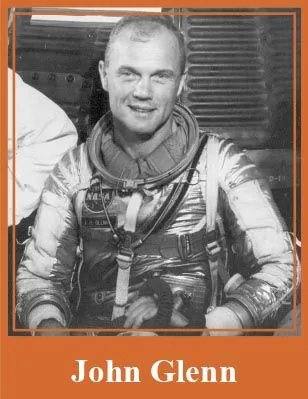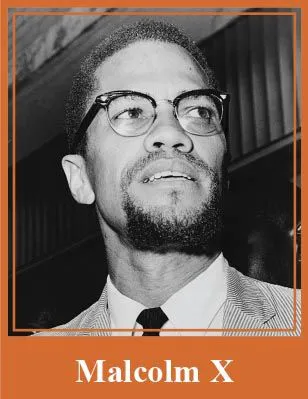| 1960 | - An American U-2 spy plane is shot down over the USSR.
- The first oral contraceptive (a.k.a. “the pill”) is introduced.
- Four black students stage a “sit-in” at a segregated lunch counter of Woolworth’s department store in Greensboro, NC.
- The Student Nonviolent Coordinating Committee is created to organize nonviolent protests against segregation laws.
- The presidential election pits senator John F. Kennedy (D-MA) against Vice President Nixon.
- Both candidates are young: Kennedy is 43; Nixon is 47.
- Kennedy charges that a “missile gap” with the USSR developed on Eisenhower’s watch.
- The first televised presidential debate takes place.
- Kennedy wins a narrow victory; he is the first Catholic president.
|
| 1961 | - Before leaving office, Eisenhower warns against the rise of a “military-industrial complex.”
- Kennedy approves a scheme, known as the Bay of Pigs Invasion, for CIA-backed Cuban nationals to invade Cuba and overthrow and kill Castro.
- The Cuban military detects the invaders, and the operation ends in disaster.
- The Freedom Rides begin as African Americans challenge segregation laws when riding buses on interstate routes.
- With Soviet support, East Germany constructs the Berlin Wall to separate East Berlin from West Berlin.
- Kennedy creates the Peace Corps and the U.S. Agency for International Development (USAID).
|
| 1962 | - The Cuban missile crisis sparks fears of a nuclear war between the U.S. and USSR.
- The Soviets are found to be installing missiles in Cuba.
- The U.S. demands removal of the missiles.
- Kennedy declares Cuba under “quarantine” to prevent delivery of missiles.
- The U.S. and USSR settle peacefully: the USSR removes Cuban missiles, and the U.S. removes missiles from Turkey.
- John Glenn becomes the first American to orbit Earth.
- Students for a Democratic Society drafts the “Port Huron Statement.”
- The Other America: Poverty in the United States by socialist, political scientist, and activist Michael Harrington is published.
- Capitalism and Freedom by libertarian economist Milton Friedman is published.
|
| 1963 | - In the March on Washington, Martin Luther King Jr. (MLK) delivers his “I Have a Dream” speech.
- MLK leads a nonviolent march in Birmingham, AL, provoking violent reaction from local police chief Eugene “Bull” Connor.
- AL governor George Wallace blocks the door of the Foster Auditorium at the University of Alabama to protest integration.
- NAACP officer Medgar Evers is murdered in MS.
- The U.S. and USSR sign the Limited Test Ban Treaty.
- South Vietnamese President Diem is killed during a coup.
- The Clean Air Act of 1963 is passed.
- In Gideon v. Wainwright, the Supreme Court rules that poor defendants have the right to legal counsel. John Glenn
- President Kennedy is assassinated in Dallas by Lee Harvey Oswald.
- Vice president Lyndon B. Johnson (LBJ; D-TX) is sworn in as president.
- Oswald is shot and killed by nightclub owner Jack Ruby while in custody outside a Dallas police station.
|
| 1964 | - In the State of the Union address, LBJ announces a “War on Poverty” in America.
- The Office of Economic Opportunity is created, which will launch programs such as Head Start, VISTA, and Job Corps.
- Responding to a North Vietnamese attack on a U.S. ship, Congress issues the Tonkin Gulf Resolution, granting the president broad powers to conduct war in Vietnam.
- The Civil Rights Act of 1964 is passed, forbidding discrimination in employment, public facilities, and places of public accommodation such as restaurants.
- On the campaign trail, LBJ announces the “Great Society” initiatives for poverty relief, civil rights, education reform, health care, and culture.
- LBJ defeats Barry Goldwater (R-AZ) in a landslide victory.
- The Free Speech Movement begins on college campuses.
- In Escobedo v. IL, the Supreme Court affirms the right to legal counsel during police interrogations.
- In the USSR, Khrushchev loses power and is replaced by Leonid Brezhnev.
|
| 1965 | - Nation of Islam leader Malcolm X is murdered.
- The Voting Rights Act of 1965 is passed.
- The Immigration and Naturalization Act of 1965 is passed, eliminating the 1920s “national origins” system.
- The Medicare program is created; the federal government will pay for senior citizens’ health care.
- The Medicaid program is created; the federal government will provide funds for health care for the poor.
- LBJ creates affirmative action programs.
- MLK organizes a peaceful civil rights demonstration, the Selma March, in AL, which provokes a violent reaction.
- In Griswold v. CT, the Supreme Court rules that the Constitution contains a right to privacy and strikes down the CT law that barred married couples’ access to contraception.
- Urban rioting occurs in the Watts section of Los Angeles.
- Pope Paul VI becomes the first pope to visit the U.S.
|
| 1966 | - In Miranda v. AZ, the Supreme Court rules that suspects must be informed of their rights to an attorney and to remain silent, commonly known as Miranda rights.
- Urban rioting occurs across the country, especially in Chicago and Cleveland.
- The Black Panther Party is founded in Oakland, CA.
- The National Organization for Women is founded.
|
| 1967 | - Race riots kill 43 in Detroit, MI, and 26 in Newark, NJ.
- College students lead peace marches in New York City and Washington, DC.
- In Loving v. VA, the Supreme Court strikes down miscegenation laws.
- Boxer Muhammad Ali refuses induction into the army.
|
| 1968 | - Viet Cong and North Vietnamese forces launch the Tet Offensive, a series of coordinated attacks throughout Vietnam during the traditionally peaceful period of the Buddhist New Year.
- The U.S. wins the battle, but the strength of the enemy undermines politicians’ message that the end of the war is imminent.
- U.S. troops murder Vietnamese civilians in the My Lai Massacre.
- LBJ announces he will not run for president.
- MLK is assassinated in Memphis, TN.
- The Paris Peace Talks begin, though they are often delayed.
- Presidential hopeful Robert F. Kenned...
|



